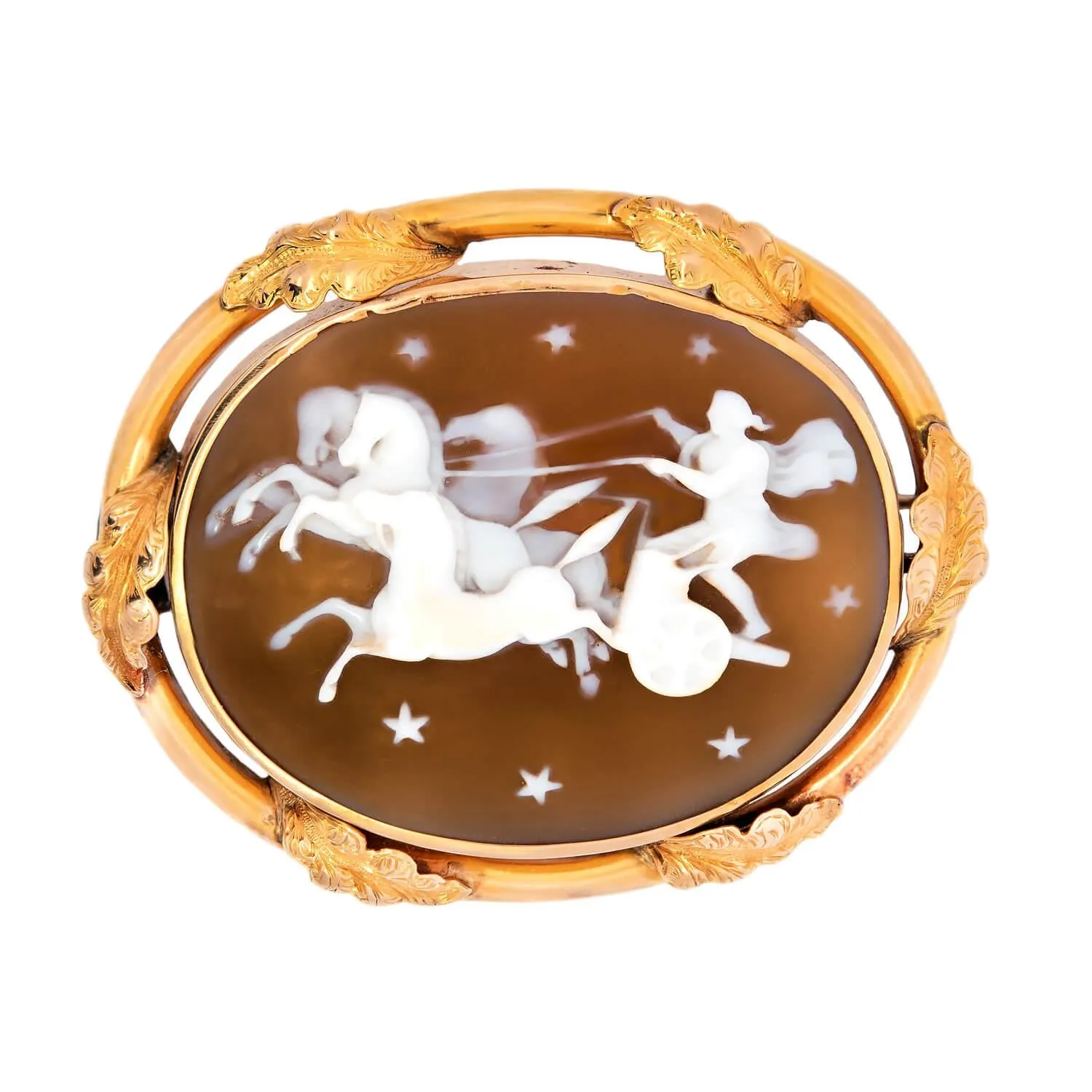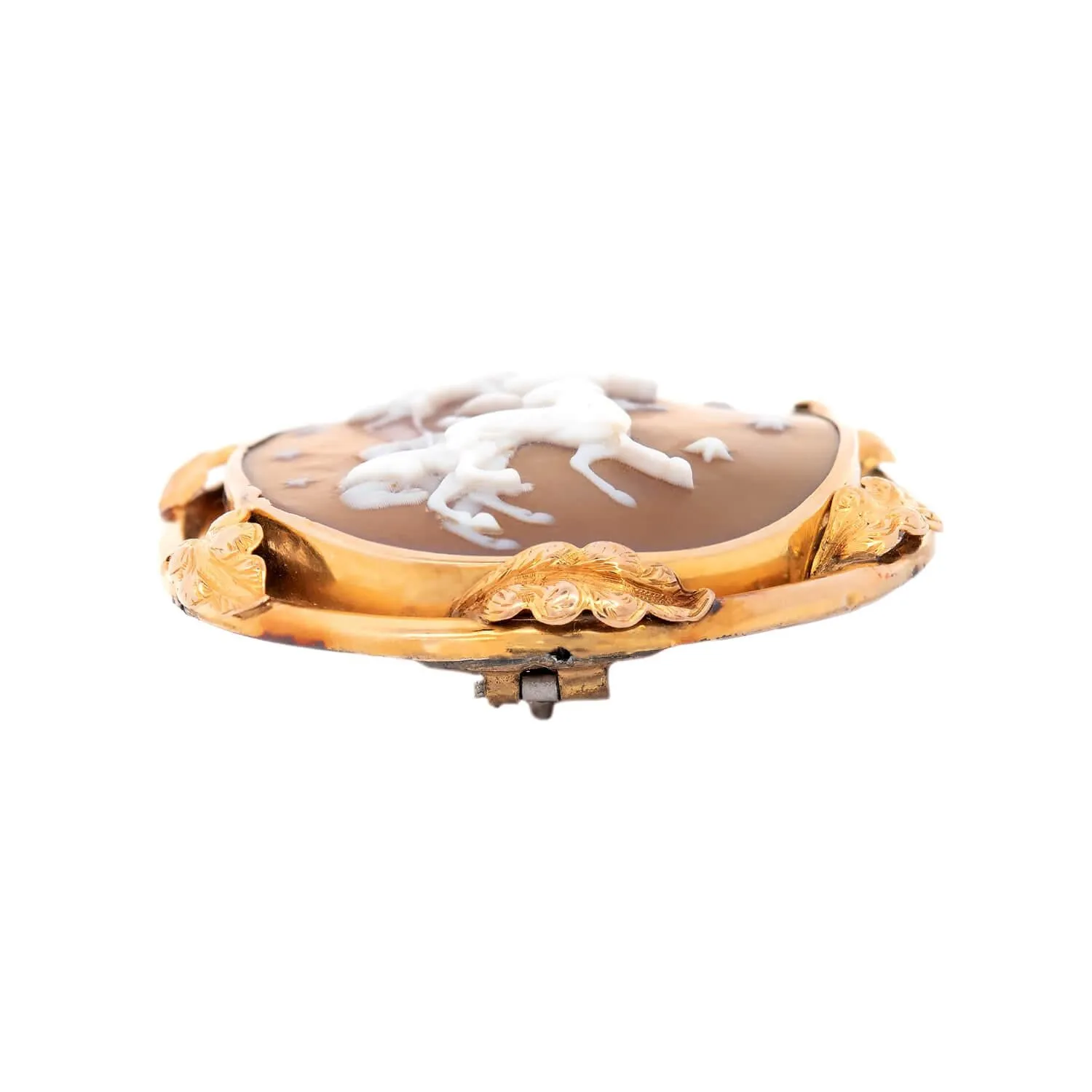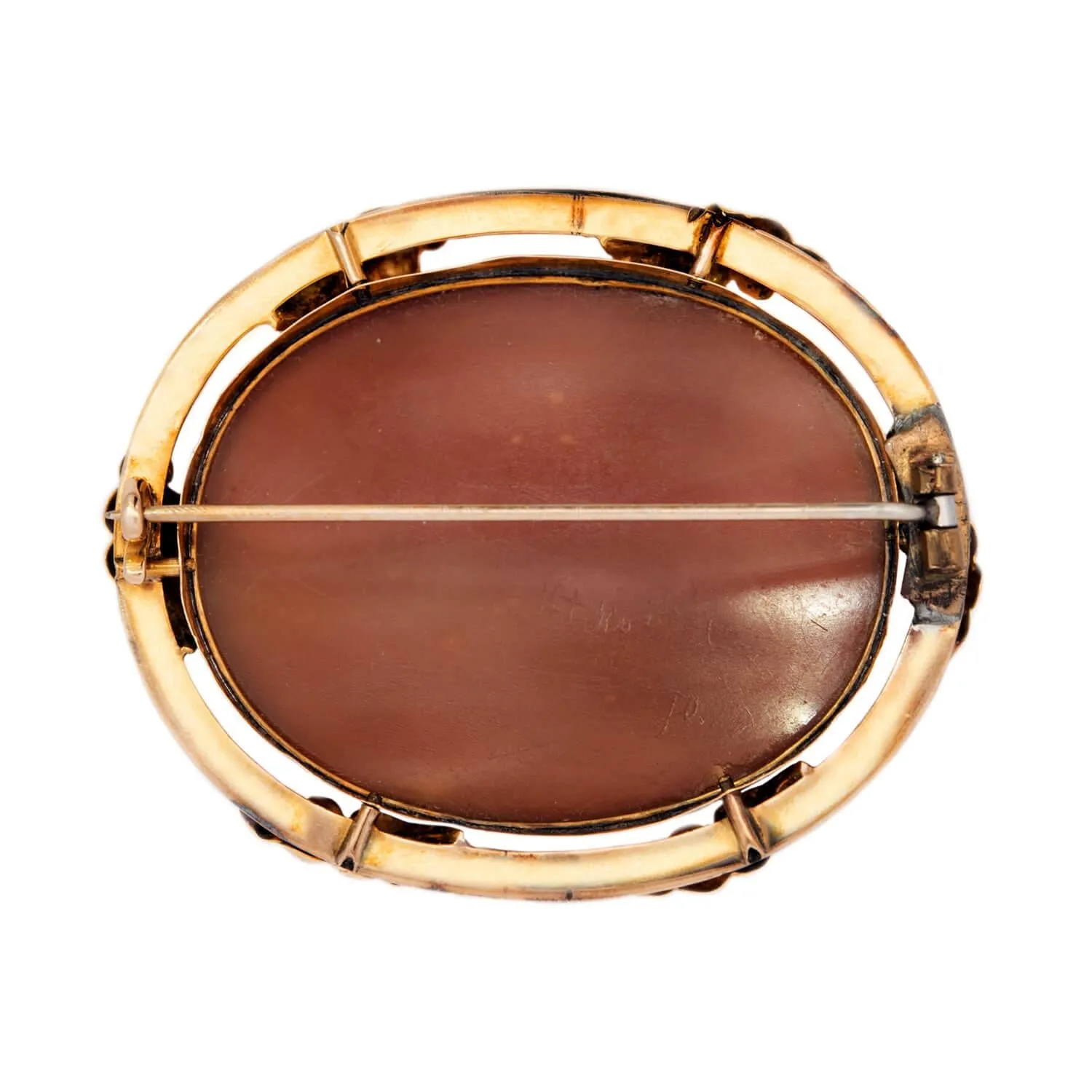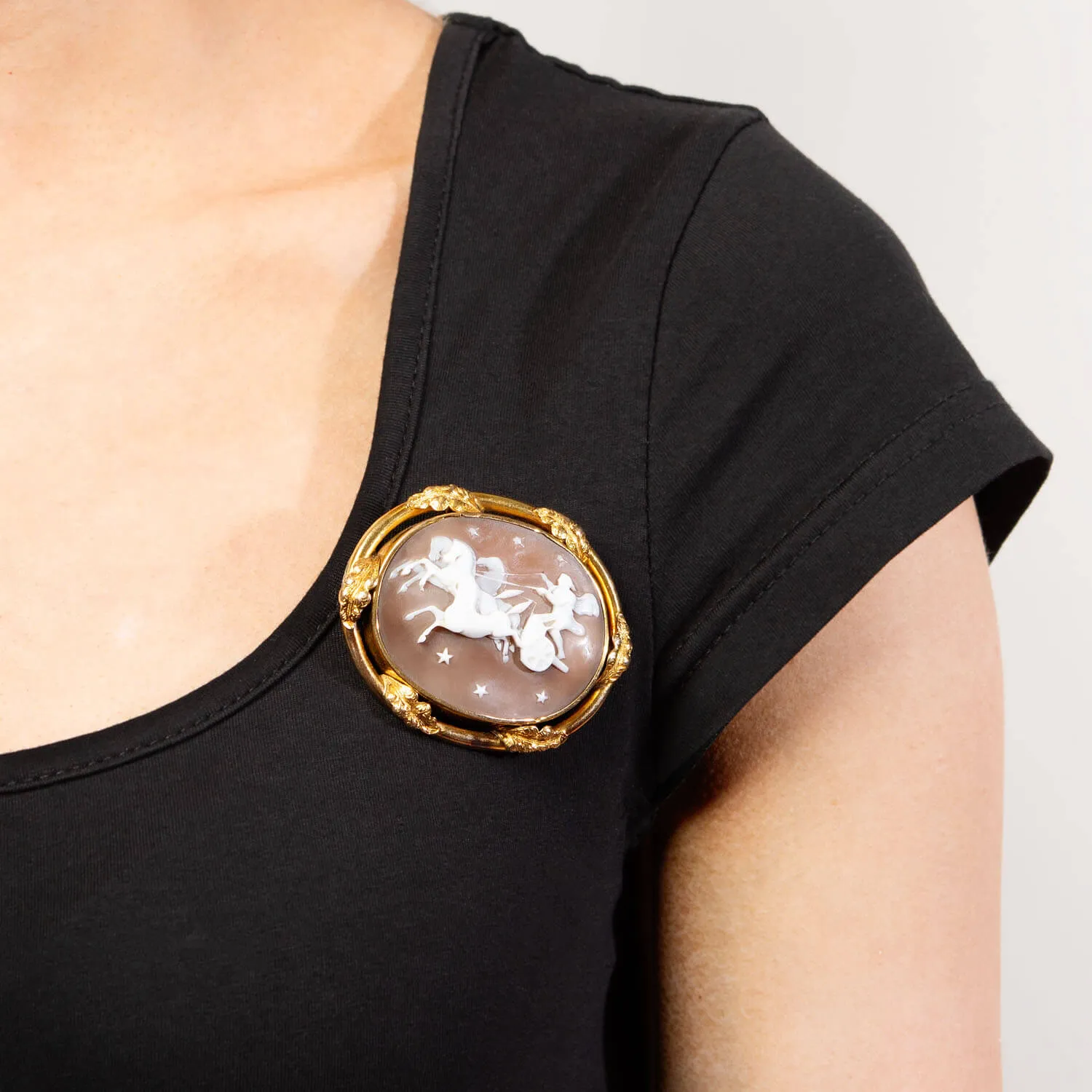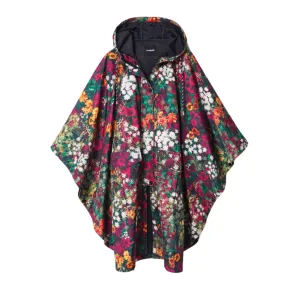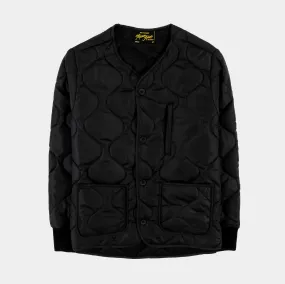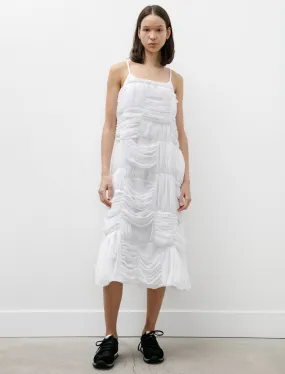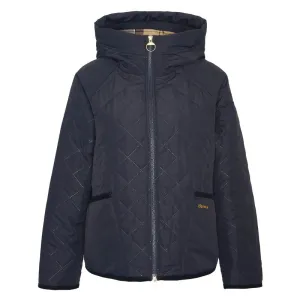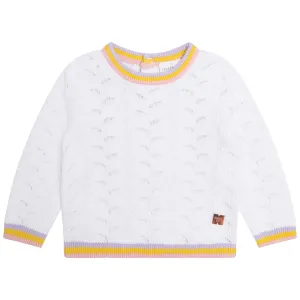The earliest known use of shell for cameo carving was during the 15th and 16th centuries. Before that, cameos were carved from hardstone. The Renaissance cameos are typically white on a grayish background and were carved from the shell of a mussel or cowry. In the mid 18th century, explorations revealed new shell varieties. Helmet shells from the West Indies, and queen conch shells from the Bahamas arrived in Europe, thus sparking a big increase in the number of cameos that were carved from shells.
A large hand carved cameo pin from the Victorian (ca1880) era! Set in vibrant 14k yellow gold, the face of the pin is adorned with four horses pulling a chariot. Within the chariot a carved figure grasps the reigns of the horses as a cape gracefully flows behind him. The galloping horses and chariot are surrounded by a border of seven small stars. This exquisite cameo is bezel set within a fantastic gold frame, which is adorned with etched three-dimensional foliate designs. The frame also include a secure pin clasp. The back of the shell features a delicate carving which reads "KT KOI". This stunning cameo is simply wonderful and would make a lovely addition to any collection!
Measurements: The pin is approximately 2" tall, is 2 1/4" wide, and 1/2” at its thickest point.
Condition: The overall condition of the pin is excellent. Besides normal surface wear there is no apparent damage to the cameo or to the gold frame. The pin clasp is secure, and in good working condition.




